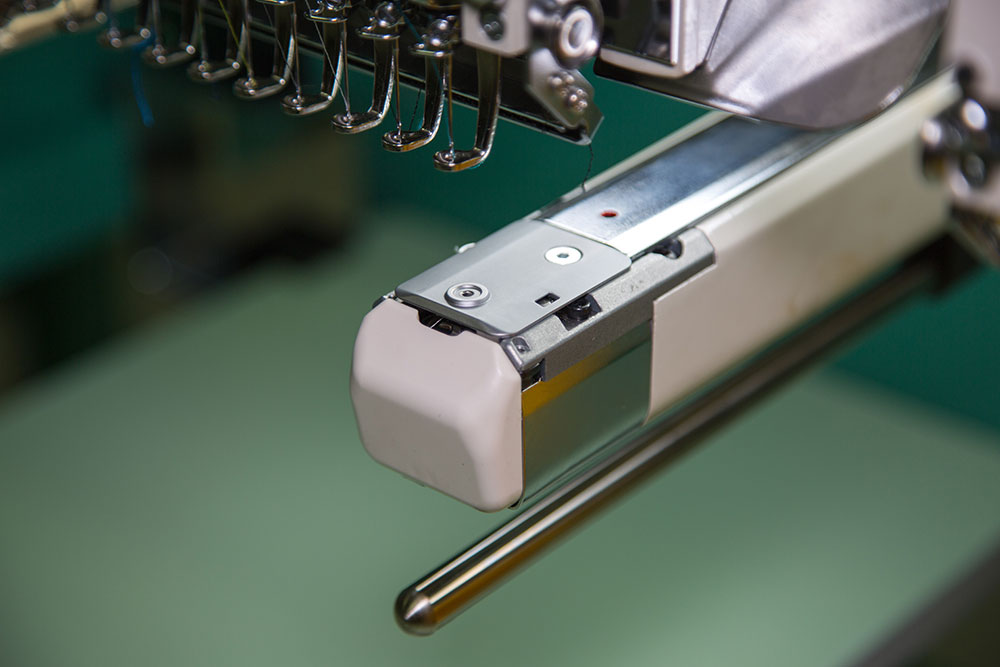March 15, 2018
Choose the Right Embroidery Machine
When you’re in the market for a new embroidery machine, look beyond the hype and consider features that will improve quality and efficiency.
There’s a lot to think about when it comes to purchasing a new embroidery machine. Not all machines are created equal, even when they look similar. And when it comes to the various features and functions, so many times it’s what you don’t see that makes the most difference. With that in mind, here are some key features you should consider when making a purchasing decision.
The first item on the list is to go with a commercial-grade machine if you’re serious about operating an embroidery business. Anything less is fine for hobby and maybe even some miscellaneous jobs here and there when looking for some extra spending money, but you need professional machinery to produce professional embroidery. Commercial machines, for example, tend to have better stepper motors, which translates to more accurate stitch placement. (And that’s just one of many differences.)
Ok, so pretty much every commercial machine has the basic ingredients, automatic trimmers, multiple needles, cap frames, thread break sensors, high speed sewing, etc. But what are some of the key things you don’t see that have an impact on efficiency and quality?
Let’s start with cap embroidery. To sew a cap effectively, you have to be able to frame it such that the shape of the cap itself is not altered during production. If it is, then the stitching will be of poor quality. Thus, the framing system must accurately and securely hold it in place. Furthermore, the cap must not come in contact with any machine surfaces while sewing. The bill is of the utmost concern, because any pressure placed on it will distort the front panel of the cap.
Look under the sewing arm, just behind the needle case. Is the arm cut at a steep or gradual angle? A gradual angle will allow the bill to make contact during sewing, which is bad. A steep angle prevents this. In addition, the steep angle will let increase your embroidery space on the front of the cap, as it allows you to sew higher on the crown. Thus, you should look for machines with a steep angle cut to improve cap sewing.

Now, look lower on the machine at the cylinder arm, which contains the bobbin and hook. The smaller the arm, the better as it allows you to get into tighter spots with garments. This makes it easier to do pockets, sleeves, socks, gloves and Christmas stockings.
A relatively new feature on some machines is an LED pinpoint light that marks the spot of the needle hole when it’s covered by a garment. This provides a nice visual feature for centering a frame on the machine in relationship to the driving needle. If you place a mark on the garment for design center, it’s now just a simple matter to move the frame until the LED spot aligns with the garment mark.
Networking and data delivery are key functions as well. How easy is it to get a design into the machine? How easy is it to network multiple machines together and manage them from a central computer? Simple plug-and-play technology makes a complex task easier and increases productivity.
Investigate and understand the options. Think about the future of where you want to go with your business. A single machine run by a single person doesn’t require a lot of high-tech connectivity, but since commercial machines are designed to last for decades, you want to ensure your machine has the flexibility to grow with your business, and networking is a big part of that.
Options such as barcode readers are important too. Once you have employees, it’s much more productive to give them a work order with a barcode that lets them pull the correct design into the machine, than it is to have them search for it and hopefully get the right one loaded correctly.
When it comes to designs, another key question is: Can you program the color sequence into the design itself and have the machine read it? Traditionally, most designs simply have needle change commands, and it’s up to the operator to set up the correct needle sequence at the machine. But if you have an operation that always uses the same thread colors on the same needles, then look at machines and software that allow you to program the needle sequence via the design file. Another time saver.
When shopping for a machine, beware of the hype, like sewing speeds. Just because a machine can run at a high speed, it doesn’t mean your designs can sew at that speed. Think of it in terms of sports cars. Even with the right road conditions, it’s rare that you would be able to get up to 150 mph. Stitch length and placement have a huge impact on quality, and they are what dictate the achievable speed, not the control panel.
Take the time to understand how an embroidery machine works and how all the moving parts impact the quality of the stitching. Use that information to determine the right machine. Don’t focus on the price tag. The pain of the price comes when you write the check and is soon forgotten IF you bought the right machine. On the other hand, if it’s the wrong machine, it will be a thorn in your side every single day until you get rid of it.
***
Jimmy Lamb is an award-winning author and international speaker with more than 25 years of experience in the apparel decoration business. Currently, he is the manager of communication at Sawgrass Technologies.